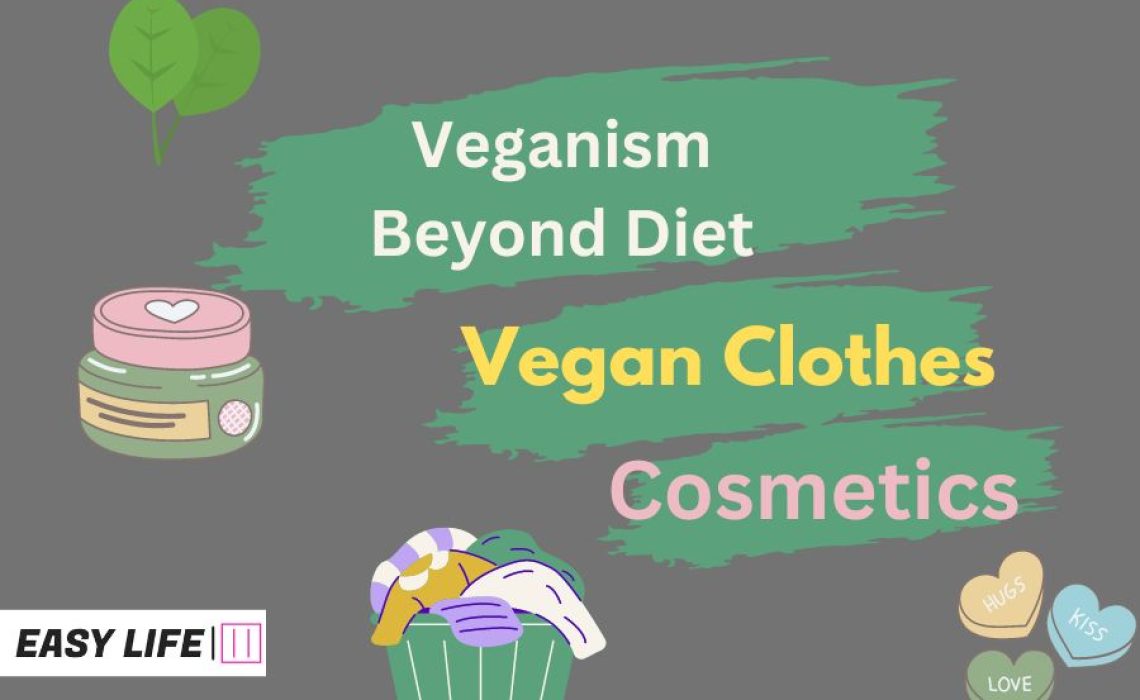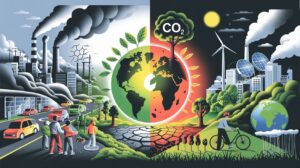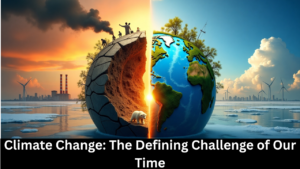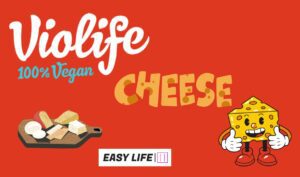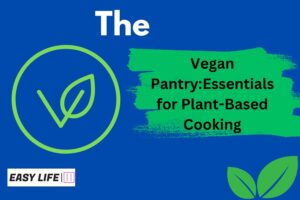Veganism Beyond Diet: Welcome to a world where compassion extends beyond what’s on your plate. Most people associate veganism with a plant-based diet, but there’s more to it than just abstaining from animal-based food products. Veganism is a lifestyle choice that seeks to exclude, as far as possible and practicable, all forms of exploitation of, and cruelty to, animals. This includes what we wear, the cosmetics we use, and even the household products we choose.
Indeed, veganism is a holistic approach to living that considers the ethical, environmental, and health implications of our daily choices. It is a lifestyle that encourages us to be mindful consumers, not only in terms of diet but also in relation to the clothes we wear, the beauty products we apply, and the everyday items we use.
This blog post will delve deeper into the concept of veganism beyond diet, exploring the importance of vegan clothing, cosmetics, and more. We will discuss the impact of these choices and provide you with practical tips to embrace a vegan lifestyle fully. Whether you’re a seasoned vegan or just curious about the lifestyle, this blog post aims to shed light on the many facets of veganism beyond the plate.
Table of Contents
ToggleThe Concept of Veganism Beyond Diet
When we speak about veganism, the conversation typically gravitates towards food. Indeed, at its core, veganism began as a dietary movement, with advocates choosing to abstain from meat, dairy, eggs, and other animal products. However, over time, the concept has evolved and expanded, reflecting a broader philosophy of life that goes beyond what we consume.
A. Expanding the Definition of Veganism
True veganism extends beyond diet, permeating all aspects of life. It’s a philosophy that acknowledges animals’ rights and seeks to minimize harm and exploitation in all forms. This includes not using animals for clothing, entertainment, or any other purpose where their rights may be compromised. Furthermore, veganism is also about promoting sustainable practices that minimize harm to our planet, making it as much an environmental stance as an ethical one.
B. The Ethical, Environmental, and Health Reasons
There are three main reasons why individuals choose veganism: ethical, environmental, and health considerations. Ethically, vegans believe that animals have a right to live without exploitation. Environmentally, they recognize that animal agriculture contributes significantly to climate change and other environmental problems, and therefore choose not to support it. From a health perspective, many vegans believe that a plant-based diet can help prevent and treat chronic diseases.
These reasons aren’t exclusive to dietary choices but also apply to other aspects of life, including clothing, cosmetics, and household products. For instance, the fashion industry is notorious for its environmental impact and animal cruelty associated with certain materials. Similarly, many cosmetic products are tested on animals or contain animal-derived ingredients. By choosing vegan alternatives, we can uphold the principles of veganism and extend our positive impact.
Vegan Clothing
In an era where conscious consumerism is becoming more prevalent, the demand for vegan clothing is on the rise. Vegan clothing refers to garments that are made without any animal-derived materials, promoting a cruelty-free and environmentally conscious fashion industry.
A. What is Vegan Clothing and Why It’s Important
Vegan clothing is defined as any clothing item that is free of animal products. This means no leather, wool, silk, fur, or any other material derived from animals. The importance of vegan clothing stems from the ethical, environmental, and health issues associated with the production of animal-based materials. By choosing vegan clothing, consumers can take a stand against animal cruelty, environmental degradation, and potential health hazards associated with animal-based clothing materials.
B. Common Non-Vegan Materials and Vegan Alternatives
Many common clothing materials are non-vegan. Leather, wool, silk, and fur are all derived from animals, often involving processes that cause harm and suffering. Vegan alternatives are abundant and innovative, ranging from organic cotton and hemp to modern materials like recycled polyester, Tencel, and even plant-based ‘leather’ made from mushrooms or pineapple fibres.
C. Features and Benefits of Vegan Clothing
Vegan clothing is not only kind to animals but also often more sustainable and hypoallergenic. Many vegan materials are biodegradable, have a lower carbon footprint, and require less water and energy to produce compared to their non-vegan counterparts. Additionally, synthetic materials can mimic the properties of animal-based ones, offering similar comfort and durability without ethical and environmental concerns.
D. Popular Brands and Where to Find Vegan Clothing
There are now many brands offering vegan clothing, from high-street stores to luxury fashion houses. Some popular names include Stella McCartney, Matt & Nat, and People Tree. These can be found online, in speciality vegan stores, or even in traditional retail outlets expanding their vegan offerings in response to growing demand.
Vegan Cosmetics
The beauty industry is a significant area where veganism is making a substantial impact. Vegan cosmetics are products that contain no animal-derived ingredients and are not tested on animals. As awareness increases about the ethical issues surrounding animal testing and the environmental impact of certain ingredients, many consumers are turning to vegan cosmetics.
A. What are Vegan Cosmetics and Why do They Matter
Vegan cosmetics are those that are free from any animal-derived ingredients and have not been tested on animals. This distinction is important because many traditional beauty products contain ingredients like beeswax, lanolin, collagen, and keratin, which are derived from animals. Moreover, countless beauty products are tested on animals, a practice that vegans deem unethical.
B. Understanding the Difference Between Vegan, Cruelty-Free, and Organic Labels in Cosmetics
When shopping for cosmetics, it’s essential to understand what labels mean. A product labelled “vegan” should contain no animal-derived ingredients. “Cruelty-free” means that the product and its ingredients have not been tested on animals. However, a cruelty-free product isn’t necessarily vegan (it could contain animal ingredients) and vice versa. Meanwhile, “organic” refers to how the ingredients in the product were grown, but it doesn’t guarantee the absence of animal products or animal testing.
C. Ingredients to Watch Out for in Non-Vegan Cosmetics
Some common non-vegan ingredients found in cosmetics include honey, beeswax, lanolin (wool grease), collagen, keratin, and certain types of squalene derived from shark liver oil. These can be replaced with plant-derived or synthetic alternatives in vegan cosmetics.
D. Benefits of Using Vegan Cosmetics
Vegan cosmetics have several benefits, from reducing animal suffering and environmental impact to avoiding allergens often found in animal-derived ingredients. Additionally, vegan cosmetics often contain more natural and skin-loving ingredients, leading to healthier skin over time.
E. Suggestions for Vegan Cosmetic Brands and Where to Purchase Them
Several brands are well-known for their vegan cosmetics, including Cover FX, ELF Cosmetics, Pacifica, and Milk Makeup. Many of these brands are available online, in major department stores, and in some drugstores. Additionally, there are several online retailers dedicated exclusively to vegan and cruelty-free products.
Vegan Household Products
Veganism’s reach also extends into our homes, influencing the products we use daily. Many standard household items, surprisingly, contain animal-derived ingredients or have been tested on animals. By opting for vegan alternatives, we can continue to uphold the principles of veganism and reduce animal suffering and environmental harm.
A. Overview of Common Household Items that May Not Be Vegan
There’s a surprising number of household products that are not vegan-friendly. This includes certain types of candles that use beeswax or stearic acid (commonly derived from animal fat), cleaning products tested on animals or containing animal-derived ingredients and even some types of paint and wallpaper. It’s also important to remember that certain materials used in home furnishings, such as leather, wool, or silk, are not vegan.
B. The Significance of Choosing Vegan Household Products
Choosing vegan household products helps reduce demand for goods that exploit animals or harm the environment. This conscious choice also often leads to products that are safer and healthier for our homes, as many vegan and cruelty-free brands also focus on reducing harmful chemicals in their formulations.
C. Examples of Vegan-Friendly Household Products and Where to Find Them
There are numerous vegan-friendly household products available today. Brands like Method, Seventh Generation, and Dr Bronner offer vegan and cruelty-free cleaning products. Soy or plant-based candles are readily available from various manufacturers. Companies like Viva Terra and West Elm offer vegan home furnishings. These products can be found in many regular supermarkets, health food stores, or online retailers specialising in vegan goods.
Challenges and Misconceptions about Vegan Products
Transitioning to a vegan lifestyle can present some challenges, often fueled by misconceptions and a lack of accurate information. Understanding these common issues can help to navigate them more effectively and make the journey toward a vegan lifestyle smoother.
A. Common Misconceptions and Challenges
One common misconception is that vegan products, whether food, clothing, or cosmetics, are automatically more expensive. While some vegan items might have a higher upfront cost, this isn’t universally true. Moreover, considering the long-term environmental and health benefits often provides a different perspective on cost.
Another challenge is the perceived inconvenience. Some people believe it’s difficult to find vegan products. While this might have been true in the past, the proliferation of vegan goods in mainstream stores and online platforms has made them more accessible than ever.
Finally, there’s a misconception that vegan products are less effective or of lower quality. In reality, vegan alternatives often match or even exceed the performance of their non-vegan counterparts.
B. Advice on Overcoming These Challenges and Misconceptions
Education is key to overcoming these challenges. By learning more about vegan products and their benefits, you can make informed decisions. This involves reading labels, researching brands, and staying informed about developments in the vegan product space.
Building a community can also be helpful. Connecting with others on the same journey can provide support, share experiences, and exchange tips. Social media platforms, online forums, and local community groups can be excellent resources.
Remember, transitioning to a vegan lifestyle doesn’t have to happen overnight. It’s okay to take it one step at a time, replacing items with vegan alternatives as you use up existing products. This makes the transition more manageable and less overwhelming.
Making the Transition: Veganism Beyond Diet
Transitioning to a fully vegan lifestyle is a process, often marked by continuous learning and gradual changes. Here are some tips to help you navigate this journey.
A. Tips for Gradually Transitioning to Vegan Products
- Start Small: Begin by identifying a few items you can easily replace with vegan alternatives. This could be your favourite lipstick, your daily cleaning spray, or even your leather wallet. Starting with smaller, manageable changes can make the process less overwhelming.
- Educate Yourself: Learn about veganism, animal rights, and the environmental impact of our consumption habits. Knowledge is empowering and can help you make informed decisions.
- Read Labels: Get in the habit of checking the labels on the products you buy. Look for certifications such as “vegan” or “cruelty-free,” and be aware of common animal-derived ingredients.
- Find Your Favorites: Once you’ve started exploring vegan products, you’ll likely find new favourites that suit your preferences and needs. Stick with these, and slowly expand your range of trusted vegan products.
- Don’t Be Too Hard on Yourself: Remember, the goal is progress, not perfection. If you make a mistake or find a certain aspect challenging, don’t give up. Every step towards a more vegan lifestyle is a victory.
B. Resources for Further Research and Support in the Vegan Journey
There’s a wealth of resources available to support your vegan journey. Books like “How to Go Vegan” by Veganuary and “The Vegan Starter Kit” by Dr Neal Barnard provide valuable advice. Websites such as The Vegan Society and PETA offer a plethora of information, including product guides and recipes. Social media platforms are also a great place to connect with the vegan community, find product reviews, and get inspired.
Conclusion: Veganism Beyond Diet
Veganism is more than just a dietary choice; it’s a comprehensive lifestyle that encompasses all aspects of our daily life, including clothing, cosmetics, and household products. By extending the principles of veganism beyond our plates, we can make a more substantial positive impact, contributing to animal welfare, environmental sustainability, and personal health.
In essence, the vegan lifestyle encourages us to be more mindful consumers, prompting us to question the origins of the products we use and the impact they have on the world around us. Whether you’re a seasoned vegan or just beginning to explore this lifestyle, every step you take towards adopting more vegan products counts.
Remember, transitioning to a fully vegan lifestyle doesn’t have to happen overnight. Small, incremental changes can lead to significant transformation over time. With the wealth of vegan products available today, it’s never been easier to make these changes. So why not take the first step today and explore the world of veganism beyond diet? The journey may be enlightening, rewarding, and filled with numerous benefits you may not have imagined.
Resources
While writing this blog post, I drew on general knowledge about veganism beyond diet and vegan products. The information presented is based on common knowledge in the field of veganism and the broader movement towards more sustainable and ethical consumer choices.
However, if you’re looking for more specific resources, here are a few that you might find helpful:
- The Vegan Society – Offers a wealth of information on all aspects of vegan living, including clothing, cosmetics, and household products.
- PETA’s Beauty Without Bunnies Program – Provides a searchable database of companies that do not test on animals.
- Leaping Bunny Program – Provides a list of brands that are cruelty-free and often include vegan options.
- Vegan Fashion Guide – A comprehensive guide from PETA UK on vegan fashion.
- Books like “The Vegan Starter Kit” by Dr Neal Barnard and “How to Go Vegan” by Veganuary offer excellent starting points for those new to veganism.
- Cruelty-Free Kitty – A blog dedicated to cruelty-free and often vegan beauty products.
- The Minimalist Vegan – A blog that often covers topics related to vegan household products and lifestyle.
Remember, when researching vegan products and brands, checking their official websites for the most up-to-date information is always a good idea. And when in doubt, don’t hesitate to contact the companies directly with your questions. They’re usually more than happy to provide information about their vegan credentials.

